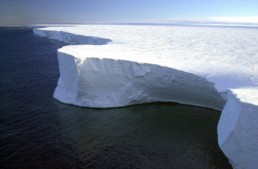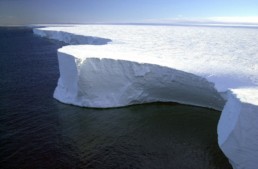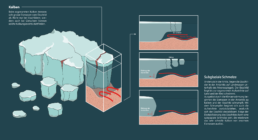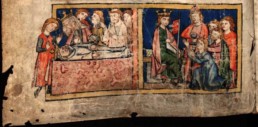Swiss Media Competence vs. Fake News
Nicht kategorisiert
What is the Swiss media’s position in the era of fake news and the omnipresence of social media? Fake News, such as the one about the controversial origin of the coronavirus, is accumulating and spreading like wildfire, especially through social media. In times of unreliable sources and false information, it is worthwhile to rely increasingly on Swiss news media in order to obtain truthful information.
Romina Gilgen, translated by Jennifer Schüepp | 18.02.2020
Picture: Elijah O’Donnell auf Unsplash
The media plays a central role, especially in a society, so it is not without reason that they are regarded as the fourth major power in politics. Ideally, the media enables critical dialogue, as well as public reflection of political, social, economic or cultural subjects. In times of fake news and social media, the reader finds themselves more and more in a situation where they must construct their own image of the facts. Not all citizens can use the media competently or take the necessary time to create themselves a well-founded image of the facts. The Research Centre for Public and Society (fög) at the University of Zurich has addressed this problem and analyzed the quality of the Swiss media. Additionally, fög is launching a new project aimed at greater media competence.
“The shift from hard news to human-interest news can be considered as the main reason for the loss of diversity in the Swiss media.”
Fög has been investigating the reporting quality of Swiss information media, such as SRG and NZZ formats for over 10 years. The understanding of quality was based on democratic performance functions, for only the help of Swiss information media makes it possible to create a public sphere. Swiss information media generally includes Swiss newspapers, magazines, television and radio programs, as well as news websites. To this end, they should produce well-balanced reporting, so that people can get an idea of different points of view. In short, the information media reflect the public discourse with the highest possible quality.
From Hard News to Human-Interest-Topics
According to researchers, the offers of the Swiss media rarely lose quality; and in addition, not all quality dimensions are equally affected. On the one hand, factual reporting, editorial contribution, and transparency of sources show a consistently high level. On the other hand, the Swiss media loses relevance and diversity. Losses were also recorded in the areas of classification, relevance of contributions, and diversity of content. An increasingly growing factor is the “Soft-News”, which are reports of lifestyle-topics, celebrities, and other entertainment contributions; whereas in the “Hard-News” section, a shift in the focus of reporting has been taking place. This shift is moving away from macrosocial contexts to a focus on people. Contributions on human-interest topics have especially increased, that is to say, content about everyday topics or other emotional topics, on which anyone can have a say. Expert Jörg Schneider, associate researcher of the fög, supplements to the study’s statements: “Swiss information media are trying to react to Social media by showing more positions and opinions”. The shift from hard news to human-interest news can be considered as the main reason for the loss of diversity in the Swiss media.
Importance of “Democratic Performance Function”:
An understanding of quality with focus on democratic performance functions requires that all media are evaluated according to the same standard. A medium may be successful in the market, but in the end only provides a slight contribution to the democratic community or even none at all. In short: Not everything rewarded by the market is also desirable in terms of democratic politics. Therefore, the aim of the “Quality of Media Yearbook” was and remains to develop a well-founded instrument based on democratic theory and to apply it to all important media types. (fög)
Values are Important
Luckily, not all dimensions are equally affected by the loss of quality. In terms of professionalism, the Swiss media do particularly well, and this professionalism is important for a foundation of trust between a medium and the consumer. “NZZ”, for instance, writes that the Swiss media should place more emphasis on credibility and dialogue, since the readers are, after all, “partners at eye level”. Ultimately, readers are most willing to subscribe to a newspaper if there is mutual trust. To achieve this, the medium must represent values similar to those of the reader. As an example, this can succeed if the medium shows proximity to the reader. This becomes even more important in times of Facebook and Twitter.
“Professional journalism is important in setting standards for public communication. Thus, the user must be aware that they are entering a public sphere as a communicator, as soon as they share comments or other contributions on social media.”
The medium should not be perceived as an unapproachable organization, but as a friend, who can provide important information. However, the expert expresses the reservation, that there must be a difference between journalist and user. The journalist should be less of a friend, and more of a trustworthy professional in communications. “Professional journalism is important in setting standards for public communication. Thus, the user must be aware that they are entering a public sphere as a communicator, as soon as they share comments or other contributions on social media.” says Jörg Schneider.
Time and Money Decide
Opinion contributions, such as comments or columns, have increased. In general, this is not a bad development, but if it happens at the expense of research, it can become problematic. In concrete terms, this means: As background reporting declines, opinion-oriented formats increase. Such a development should be treated with caution, as there is a growing danger in promoting these much less resource-intensive opinion formats. Due to the omnipresent cost-cutting measures, the high level of resources required in classical journalistic research can in some cases no longer be guaranteed. This can have negative effects if it is at the expense of background reporting. Jörg Schneider agrees with this statement: “The resources are missing!”. So, the question the media industry should ask themselves is, how can we channel more resources into journalism? In addition, Schneider says, it is important to create an awareness of news quality. The expert could well imagine a mixed form in the future, in which, for example, some articles are paid for while others are provided by the Public Service as a basic service.
Four progressive Quality Requirements for Public Reasoning:
I) Relevance: Citizens should debate on generally relevant issues
II) Universality (diversity): When reason rules, all reasoned opinions must be allowed, and no subject shall be excluded from public debate.
III) Accessibility: The public sphere shall be accessible to all irrespective of status and origin
IV) Rationality: Orientation based on the principle of gentle force of the better argument (… and not based on polemics or the “ad hominem” speech)
According to fög, these quality requirements for “good” public debates are still valid and until this day form the foundation of the democratic order of modern, civilized societies.
Saving at the Cost of Classification
The cost-saving measures of the editorial offices are therefore particularly noticeable in the dimension of classification. The crux of the matter is simply hidden in the fact that you can get fake news cheaply, whereas thoroughly researched offers cost money. Thanks to the interplay of various dimensions, the quality of the Swiss media can nevertheless maintain itself to a certain extent. Ultimately, journalistic resources can be seen as a decisive factor for quality offers. Based on that, it can be concluded that it is extremely important to provide information journalism with enough financial and human capital. This is the only way in which it is possible for information journalism to fulfil its responsibility to society.
Media Competence – a School Subject for Life
The fög of the University in Zurich takes even another step further and wants to teach more media competence in school with its project Newsup.ch. For this purpose, they launched a new project for high school students. Therefore, the fög puts its own editorial staff together, which is instructed to supply appropriate teaching material to teachers. By using the provided material, teachers should be able to explain pupils the difference between fake news and journalistic information using illustrative examples. “In light of the new media and their provided wealth of information, not only the young need media competence, but all users do,” says Jörg Schneider. Thus, users themselves would be able to verify the truthfulness of the information.
“In light of the new media and their provided wealth of information, not only the young need media competence, but all users do.”
With this project, the fög wants to share its research results more with the interested public and make them accessible to them. However, it is primarily intended to reach young people. Today’s young people have grown up with their generation-specific use of media. They no longer inform themselves through TV or newspapers, but mostly through news sites, blogs or social media. The danger of social media lies in the fact that you only obtain limited and filtered information. When done in this way, reporting becomes quite biased.
Distinguish Real News from Fake News
In order to form a well-founded opinion, adolescents should question their own usage behavior, collect knowledge about our media system, verify sources and classify information. Concretely, one can summarize this under the term “media competence”. Furthermore, the fög wants to bring the advantages of being well-informed closer to the adolescents. The young people, who on the one hand have turned away from news journalism and, on the other hand, are no longer reached by the outdated news formats, (which account for about 56% of the 16-19 year old’s), should again learn an understanding of the added value and importance of such offers. So that, in times of information overload regarding the coronavirus, they can find out for themselves which information is more likely fake news, and which is not.
Would you like to receive our Newsletter? Please subscribe here Newsletter
If you enjoyed reading this article, maybe you would like to support our work? Thanks a lot!
Author
Romina Gilgen
Expert
Joerg Schneider
Teilen
The eternal ice and the sea level
Nicht kategorisiert
In 2007, the Intergovernmental Panel on Climate Change warned about the ice sheets melting away in Greenland and West Antarctica. A rise in sea level from four to six meters would be imminent. This could happen within the next centuries, perhaps even millennia. Now researchers from the NGO Climate Central predict in their newest November statement a rise of up to two meters in the year 2100 already. Estimated impacts of global warming have suddenly shifted into the near future and threaten to hit mankind in the form of a rise in sea level as soon as in the next decades. In the meantime, looking into the past shows how fragile the interaction between ice and ocean can be.
Martin Zahno and Luisa, translated by Romuald Bolliger | 01.01.2020
Ellsworth Mountain Range in Antarctica (Image by skeeze from Pixabay)
A rise of one or even two meters does not seems much at first. And yet, if the sea level continues to rise so rapidly, the consequences will be drastic and felt in the near future. Horst Machguth, Professor for glaciology at the University of Freiburg: “Paired with storm tides, such a new sea level will lead to flood disasters.” According to the latest calculations, such extreme events not only occur more frequently due to the increased volume of water, but above all much more regularly. “Areas that are barely above sea level far inland run the risk of being hit by such floods,” Machguth continued. Countries like Vietnam, Bangladesh or the Netherlands, but also cities like Jakarta, Mumbai or Venice would thus already face storm tides in the coming decades. Such scenarios have already been predicted by researchers worldwide in recent decades. However, the period in which such devastating extreme events could occur has now moved much closer to the present. It is no longer a matter of millennia. For example, in its latest report of September 2019, the Intergovernmental Panel on Climate Change assumes that the six meters rise in sea level could be reached as early as 2300. Such a scenario would pose considerable problems for each of the world’s almost 700 million coastal inhabitants. Large areas could thus become permanently inhabitable. The consequences of sea-level rise can thus be regarded as quite threatening for the foreseeable future. The situation is equally alarming when one considers the causes of this phenomenon.
Ice sheet in Antarctica (Image by David Mark from Pixabay)
Where does this rise in sea level come from?
In order to understand the reasons for these new scenarios, one must first distinguish between glaciers and ice sheets. Ice sheets refer to the huge ice masses that are tied up on Greenland and in the Antarctic. Although melding glaciers have little effect on rising sea levels, it is clear that around half of the ice that melts in the world is currently coming from glaciers. “This is mainly due to the large surface area of the world’s glaciers,” says Machguth. Ablation, or melting of the ice, takes place primarily on the surface of the ice mass. “However, this is not sustainable,” the glaciologist continues. “At the time when most of the glaciers have melted away, there will still be a lot of ice left in the Arctic, which will continue to cause sea levels to rise for a long time to come. The ablation Greenland’s glaciers has also increased in recent years, by much more than the 2007 reports estimated.
“Although melting glaciers have little effect on rising sea levels, it is clear that around half of the ice that melts in the world is currently coming from glaciers.”
Greenland’s ice sheet is already contributing significantly to the rise in sea level. Significantly more than the ice that is currently tied up in Antarctica. “The reasons are different”, explains Machguth, “on one hand large parts of Greenland lie far to the south and, on the other hand, it is important to understand that it is much warmer in the Arctic than at the South Pole”. According to the glaciologist, this is partly due to the fact that Greenland is surrounded by large land masses. Antarctica, for its part, has its own climate system due to its location surrounded by oceans where temperatures below freezing point prevail even during summer months.
WIBLO infographic by Luisa Morell
Risk factor Antarctica
However, the fact that Antarctica is anything but a stable system can be inferred by looking into the past. Between the last two ice ages, the global sea level rose by up to nine meters within a relatively short period of about 1000 years, and reaching five meters above today’s sea level at times. Machguth argues that this abrupt rise is not due to the rapid melting alone: “This event was most likely related to enormous calving events in West Antarctica”. During the so-called calving process, entire ice masses break away from the ice sheet and then float to the open sea until they finally melt.
Infobox Antarctica
The estimated maximum ice thickness in the Adélie Land region is 4’776 meters. With a surface area of around 13’924 km2, Antarctica is larger than the EU and around 337 times larger than Switzerland! In addition, Antarctica is subject to above-average winds. Year-round wind speeds of up to 300 km/h are not uncommon.
Ominous is the fact that large parts of the West Antarctic ice sheet, unlike in Greenland, reside on land masses below sea level. If West Antarctica were to destabilize, subglacial melting could follow. The consequence of such a subglacial melt as well as mechanical destabilization would be the rapid calving of enormous masses of ice. With a potential rise in sea level of seven meters in West Antarctica, this remains a threatening idea. “Nevertheless such scenarios are to be taken with a pinch of salt, because this kind of sudden event could in turn affect global phenomena such as ocean currents, which in turn have an impact on climate,” explains Machguth.
Even if the consequences of such a scenario are difficult to fathom, the short-term effects of sea level rise are already evident today. Its impact on the whole of mankind is now slowly becoming apparent and tangible. Consequences of such a process can hardly be stopped, but at best only contained.
Would you like to receive our Newsletter? Please subscribe here Newsletter
If you enjoyed reading this article, maybe you would like to support our work? Thanks a lot!
Ellsworth Mountain Range in Antarctica (Image by skeeze from Pixabay)
A rise of one or even two meters does not seems much at first. And yet, if the sea level continues to rise so rapidly, the consequences will be drastic and felt in the near future. Horst Machguth, Professor for glaciology at the University of Freiburg: “Paired with storm tides, such a new sea level will lead to flood disasters.” According to the latest calculations, such extreme events not only occur more frequently due to the increased volume of water, but above all much more regularly. “Areas that are barely above sea level far inland run the risk of being hit by such floods,” Machguth continued. Countries like Vietnam, Bangladesh or the Netherlands, but also cities like Jakarta, Mumbai or Venice would thus already face storm tides in the coming decades. Such scenarios have already been predicted by researchers worldwide in recent decades. However, the period in which such devastating extreme events could occur has now moved much closer to the present. It is no longer a matter of millennia. For example, in its latest report of September 2019, the Intergovernmental Panel on Climate Change assumes that the six meters rise in sea level could be reached as early as 2300. Such a scenario would pose considerable problems for each of the world’s almost 700 million coastal inhabitants. Large areas could thus become permanently inhabitable. The consequences of sea-level rise can thus be regarded as quite threatening for the foreseeable future. The situation is equally alarming when one considers the causes of this phenomenon.
Ice sheet in Antarctica (Image by David Mark from Pixabay)
Where does this rise in sea level come from?
In order to understand the reasons for these new scenarios, one must first distinguish between glaciers and ice sheets. Ice sheets refer to the huge ice masses that are tied up on Greenland and in the Antarctic. Although melding glaciers have little effect on rising sea levels, it is clear that around half of the ice that melts in the world is currently coming from glaciers. “This is mainly due to the large surface area of the world’s glaciers,” says Machguth. Ablation, or melting of the ice, takes place primarily on the surface of the ice mass. “However, this is not sustainable,” the glaciologist continues. “At the time when most of the glaciers have melted away, there will still be a lot of ice left in the Arctic, which will continue to cause sea levels to rise for a long time to come. The ablation Greenland’s glaciers has also increased in recent years, by much more than the 2007 reports estimated.
“Although melting glaciers have little effect on rising sea levels, it is clear that around half of the ice that melts in the world is currently coming from glaciers.”
Greenland’s ice sheet is already contributing significantly to the rise in sea level. Significantly more than the ice that is currently tied up in Antarctica. “The reasons are different”, explains Machguth, “on one hand large parts of Greenland lie far to the south and, on the other hand, it is important to understand that it is much warmer in the Arctic than at the South Pole”. According to the glaciologist, this is partly due to the fact that Greenland is surrounded by large land masses. Antarctica, for its part, has its own climate system due to its location surrounded by oceans where temperatures below freezing point prevail even during summer months.
WIBLO infographic by Luisa Morell
Risk factor Antarctica
However, the fact that Antarctica is anything but a stable system can be inferred by looking into the past. Between the last two ice ages, the global sea level rose by up to nine meters within a relatively short period of about 1000 years, and reaching five meters above today’s sea level at times. Machguth argues that this abrupt rise is not due to the rapid melting alone: “This event was most likely related to enormous calving events in West Antarctica”. During the so-called calving process, entire ice masses break away from the ice sheet and then float to the open sea until they finally melt.
Infobox Antarctica
The estimated maximum ice thickness in the Adélie Land region is 4’776 meters. With a surface area of around 13’924 km2, Antarctica is larger than the EU and around 337 times larger than Switzerland! In addition, Antarctica is subject to above-average winds. Year-round wind speeds of up to 300 km/h are not uncommon.
Ominous is the fact that large parts of the West Antarctic ice sheet, unlike in Greenland, reside on land masses below sea level. If West Antarctica were to destabilize, subglacial melting could follow. The consequence of such a subglacial melt as well as mechanical destabilization would be the rapid calving of enormous masses of ice. With a potential rise in sea level of seven meters in West Antarctica, this remains a threatening idea. “Nevertheless such scenarios are to be taken with a pinch of salt, because this kind of sudden event could in turn affect global phenomena such as ocean currents, which in turn have an impact on climate,” explains Machguth.
Even if the consequences of such a scenario are difficult to fathom, the short-term effects of sea level rise are already evident today. Its impact on the whole of mankind is now slowly becoming apparent and tangible. Consequences of such a process can hardly be stopped, but at best only contained.
Would you like to receive our Newsletter? Please subscribe here Newsletter
If you enjoyed reading this article, maybe you would like to support our work? Thanks a lot!
Author
Martin Zahno
Illustrator
Luisa Morell
Expert University of Bern
Horst Machguth
Teilen
The Coveted Knight
Nicht kategorisiert
A project team from the University of Berne is working on a new edition of Wolfram von Eschenbach’s epic poem Parzival. The latest edition is almost two centuries old and no longer meets current requirements of textual criticism.
Anika Ruppen, translated by Sabrina Haslimeier | 01.01.2020
Handwriting Z Heidelberg, University Library, Cod. Pal. germ. 364 verse 1.1
Parzival mag der wohl berühmteste Ritterheld der mittelalterlichen Literatur sein. Der zwischen 1200 und 1210 verfasste Roman ist in so vielen Textzeugen erhalten wie kein anderer der Gattung der Artusromane: Laut den Angaben der Projektwebsite (www.parzival.unibe.ch) sind sechzehn Handschriften, ein Druck und 72 Fragmente bekannt, die den Text überliefern. Der jüngste Fund, ein in Mainz vorzufindendes Fragment, wurde im Jahr 2019 gemacht. Dass weitere vollständige Handschriften entdeckt werden, ist heutzutage eher unwahrscheinlich. Fragmente aber – also Bruchstücke von Handschriften – können jederzeit in den Einbänden von lange nicht mehr benutzten Handschriften entdeckt werden. Grund dafür ist die so genannte Makulatur: Primär um 1500 wurden Handschriften mit wertlos gewordenen Texten zerschnitten und das daraus gewonnene, nach wie vor wertvolle und sehr stabile Pergament wiederverwendet. Zumeist fanden Schnipsel und Streifen aus ehemaligen Handschriften ihren Weg auf Einbände von neuen Handschriften und Drucken, wo sie die entsprechenden Materialien verstärken sollten. So bleiben unter Umständen Teile von Textzeugen Jahrhunderte lang in Einbänden von vornehmlich in Bibliotheken gelagerten Handschriften versteckt. Teils zufällig, teils nach spezifischer Suche, werden sie schliesslich wieder aufgespürt.
Handwriting R Bern, Burgerbibliothek of Berne, Cod. AA91 61v verse 308.11
Masterpiece with shortcomings
Karl Lachmann’s edition of Parzival, which hasn’t been superseded to this day, was published in 1833, at a time when the study of vernacular poetry from the Middle Ages was experiencing a real boom. What was once considered a remarkable editorial achievement falls short of present day standards due to deficiencies — the methods used are outdated by today’s standards, even though it’s based on comparatively few manuscripts. Since the number of text witnesses has increased considerably since then, a majority of the manuscripts are not sufficiently taken into account.
“The cooperation with other disciplines such as computer sciences and evolutionary biology breathe new life into the subject.”
Future-oriented concept
In 2001, Prof. Dr. Michael Stolz (then at the University of Basel, since 2006 at the University of Bern) and his research team took on the challenge of preparing a critical re-write of the Parzival novel. In addition to a planned edition in printed book form, data will also be accessible in an electronic format. To establish a foundation, all 89 text witnesses were transcribed and the various groupings of manuscripts were investigated. “To the great advantage of the editors, Parzival’s textual history has already been explored several times and from different perspectives,” explains Dr. des. Mirjam Geissbühler, who has been part of the research team since 2011. At best, this would support our own investigations on previous research findings. However, innovative digital methods would enable cutting-edge possibilities in text editing and analysis. Thanks to electronic storage methods, new possibilities arise, including fresh perspectives on the connections between the different manuscripts.
Handwriting R Bern, Burgerbibliothek of Berne, Cod. AA91 55v verse 282.9
Ensuring accuracy
The project, funded by the Swiss National Science Foundation, has been met with widespread interest. “The digital database resulting from the Parzival project is a real treasure trove for researchers,” explains Geissbühler, who worked intensively with the database in the course of her dissertation. She examined the so-called Manuscript L, which passes on Parzival’s story along with other texts about King Arthur and medieval history.
The complexity of this subject is also reflected in the lengthy duration of the project. Whereas the first fifteen years were spent transcribing the text witnesses and processing them into one edition based on four parallel versions, the focus now lies on revising the text. “Ensuring consistency in this work dating from the pioneer days of digitization is a major challenge. We are working with the utmost care”, Geissbühler says as she explains the relevance of these final stages. For example, checking the edition for consistency as directed by strict guidelines, demands the utmost concentration and precision from the research team.
Handwriting O Munich, Bavarian State Library, Cgm 18 1r verse 3.25
The reputation of medieval literature
A modernized edition for scholarly research is not the only enrichment that the project provides. It also serves to refresh the somewhat outdated image of medieval literary studies. “The cooperation with other disciplines such as computer sciences and evolutionary biology breathe new life into the subject,” says Geissbühler. What the digital component will look like in the future remains uncertain due to the rapid development of technology. Accordingly, solutions for the sustainable safeguarding of research data are also being sought. For the time being, German Studies can look forward to an valuable contribution to its research world — and to a newly illuminated future for the coveted knight, now more accessible than ever—for everyone.
Would you like to receive our Newsletter? Please subscribe here Newsletter
If you enjoyed reading this article, maybe you would like to support our work? Thanks a lot!
Autorin
Anika Ruppen
Expertin Universität Bern









